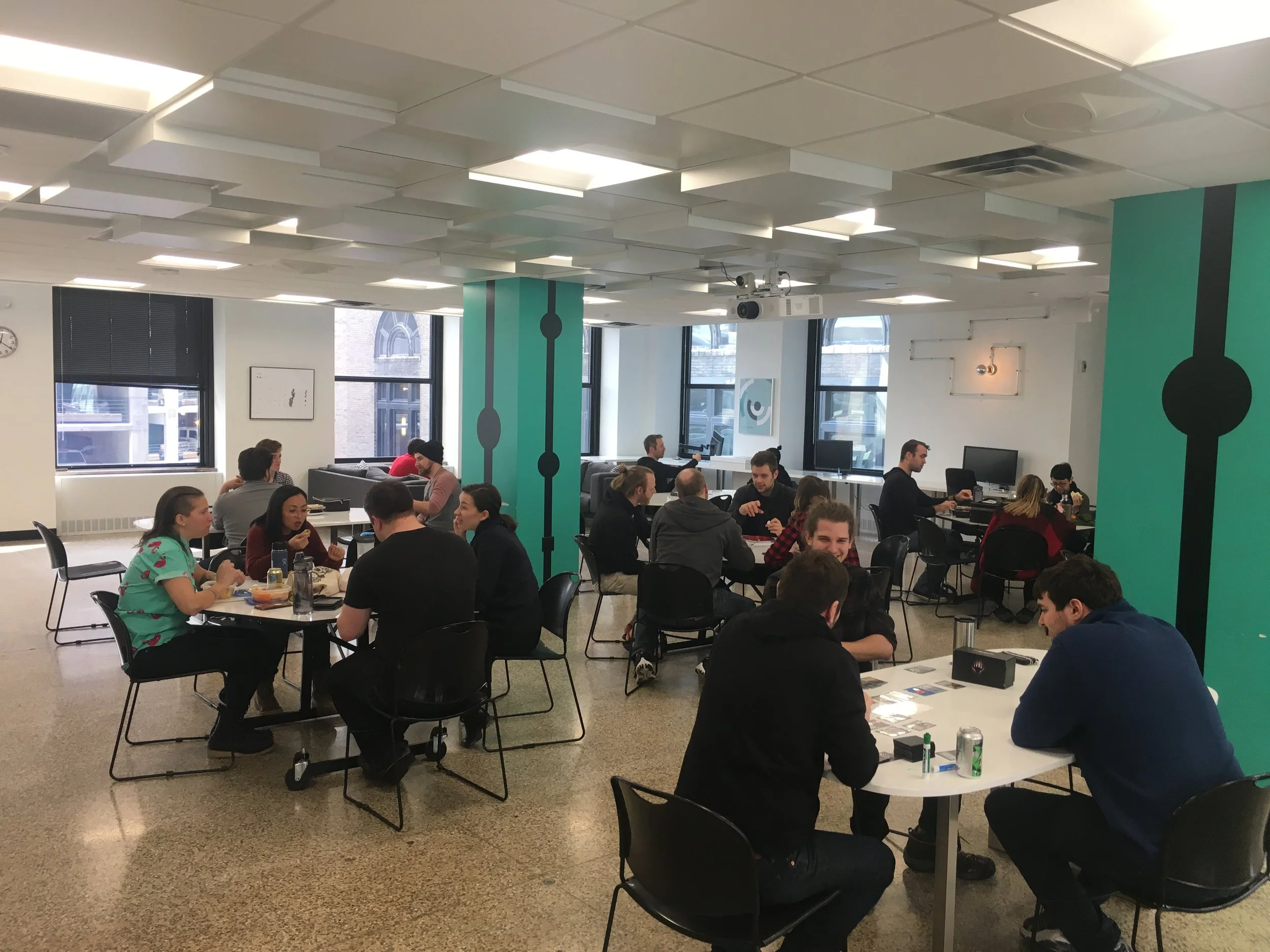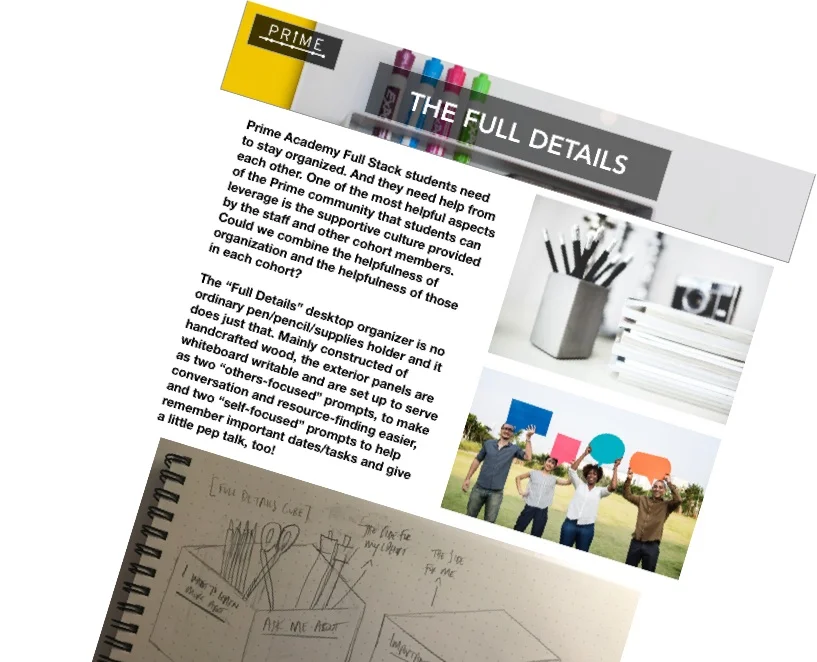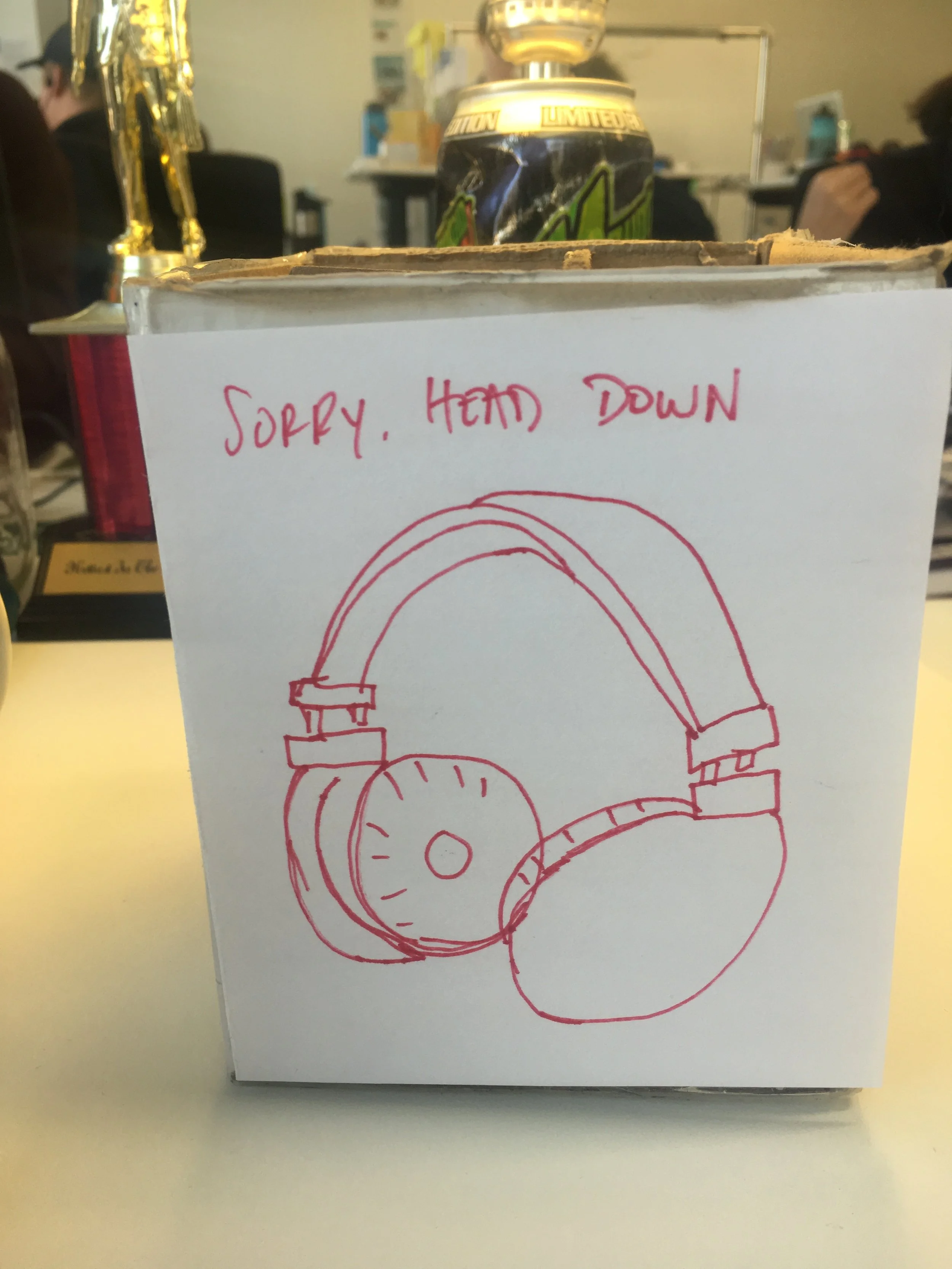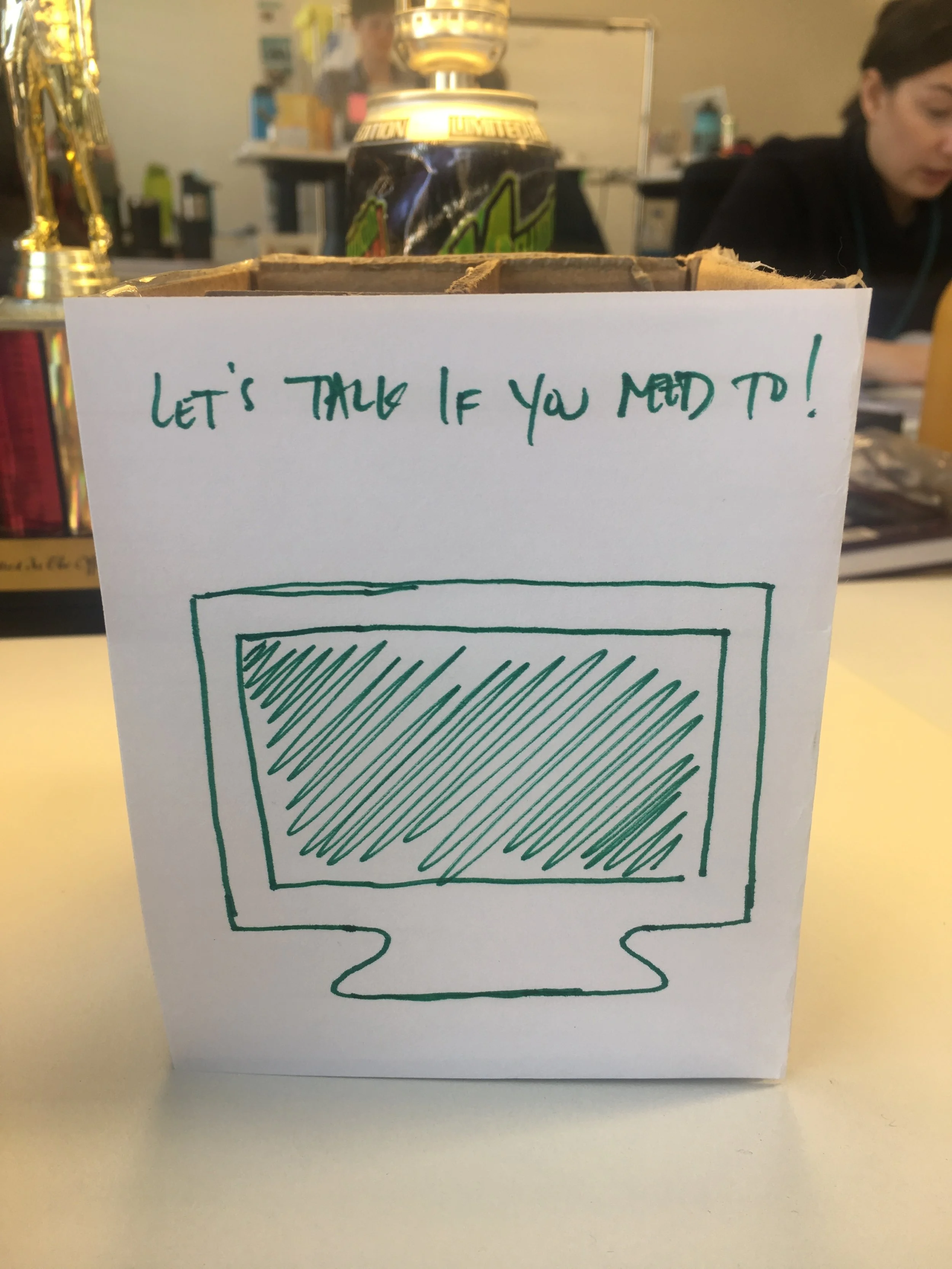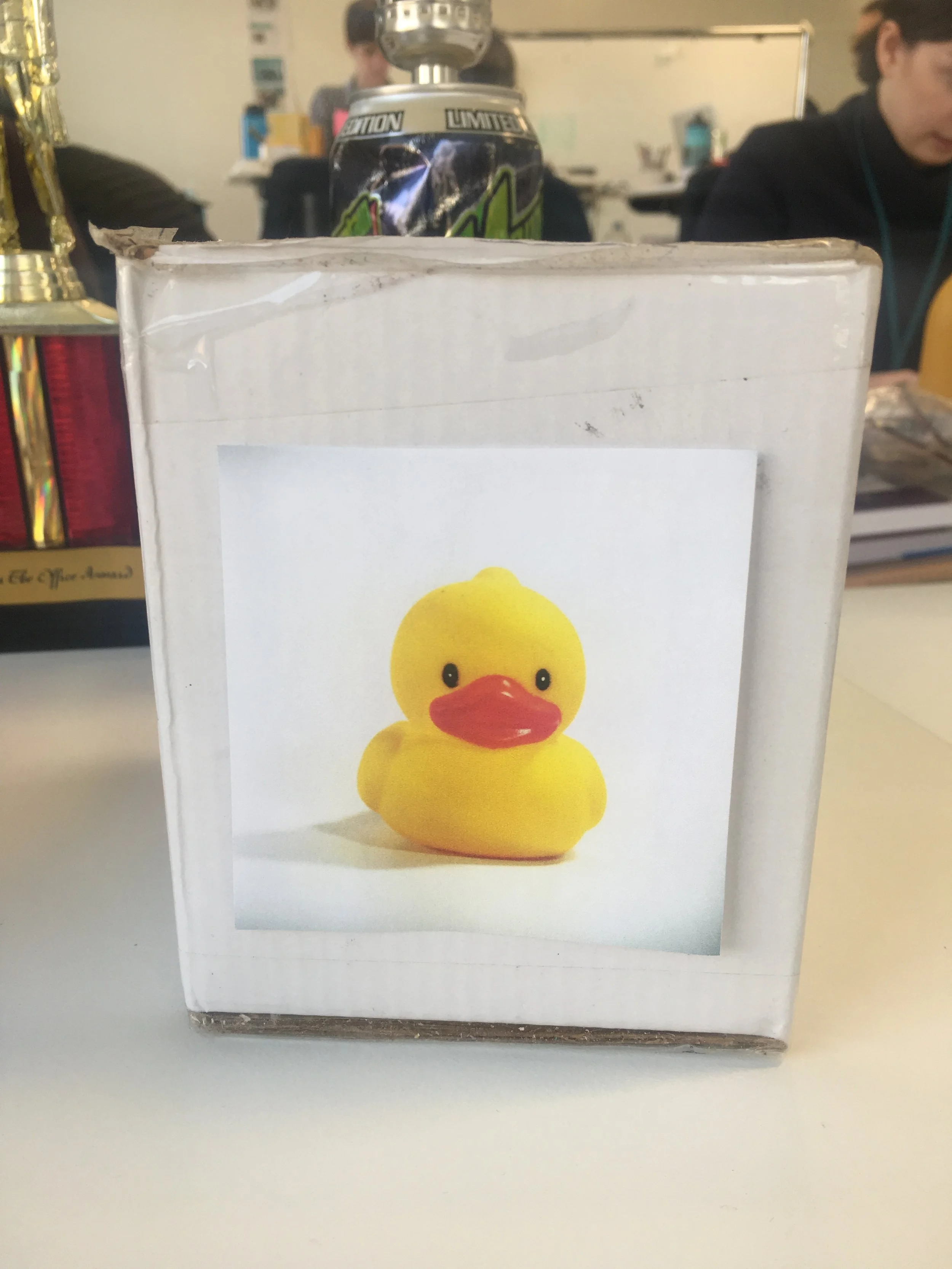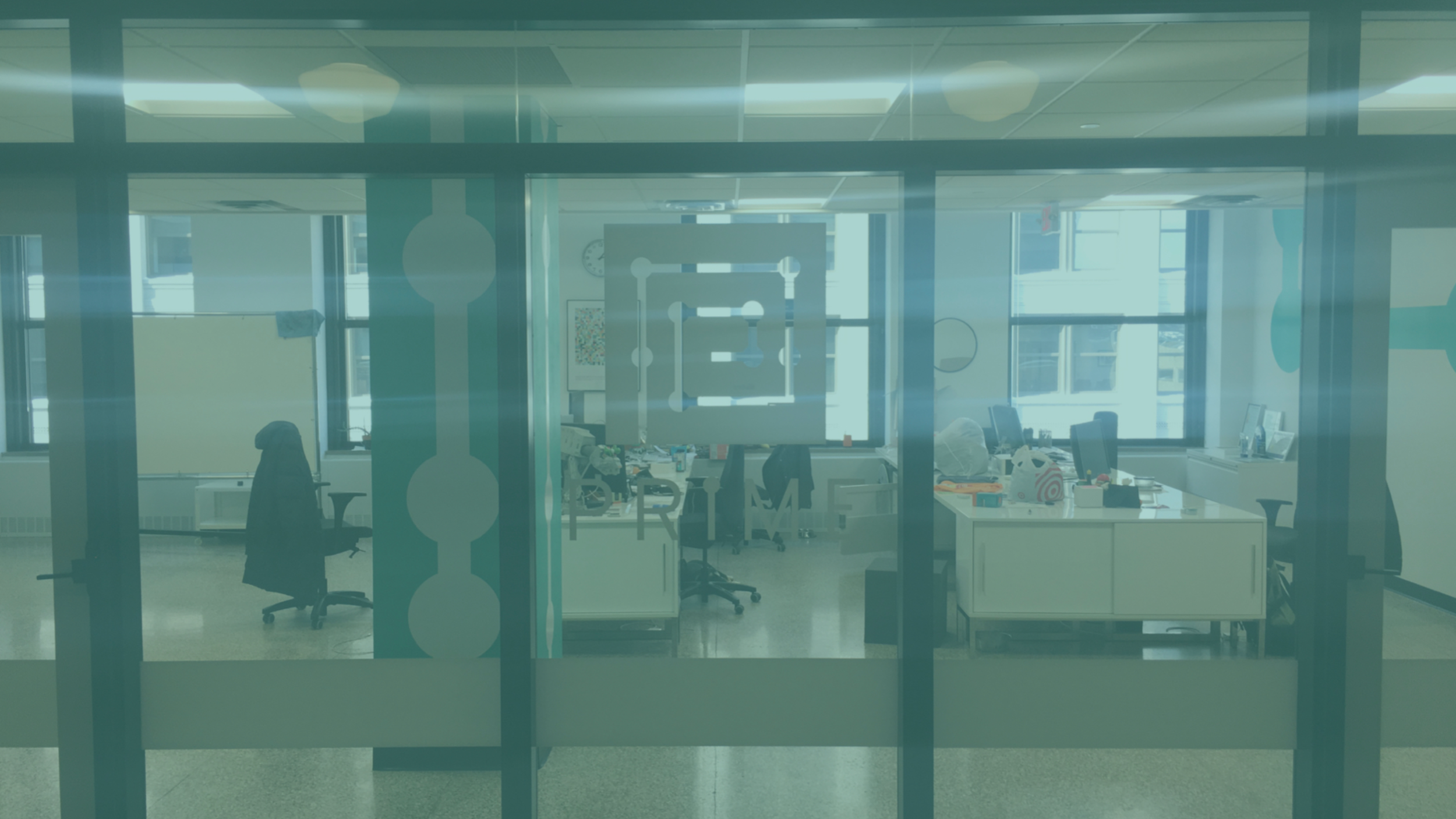
The Challenge
Prime Digital Academy is an immersive training program for full stack engineering and user experience design in Minneapolis, Minnesota. With a focus on technical competency, group and individual client-focused project work, and soft skills coaching, their goal is to equip people from diverse backgrounds for their new careers and inspire them to help solve today’s biggest problems.
Prime approached me to help redesign their current welcome gift for Full Stack Engineering students. The current gift, a water bottle, is no longer being manufactured—they had also heard that the water bottle was difficult to use and felt impersonal. I was tasked with helping Prime stakeholders determine what a more suitable and enjoyable gift would be as they welcome new Full Stack students onto campus.
The Approach
Participant Observation
To determine what this gift might be, it was important to understand the kind of culture and environment that current Prime Full Stack students are a part of. To do this, I conducted a participant observation to gain insight into the thoughts, feelings, and experiences that have made up their time at Prime Academy to this point. From this participant observation, some of the strongest and most recurring insights led me to this main theme:
The supportive and understanding environment is not only appreciated by full stack students, but vital to their success—it adds a significant layer of emotional and educational stability during times when daily homework or cohort projects could leave students blocked or frustrated.
Participant observation during lunch
Initial design concept moodboard. View full version here.
Low Fidelity Prototyping
I formulated an initial prototype to test with current full stack students, which incorporated multiple facets of expressing themselves and getting to know their cohort, as well as meeting the functional need of organizing some of the physical objects they might use throughout the day. The prototype, called the Cohort Cube, featured a main compartmentalized organizational area and whiteboard walls that could be used to document in various categories:
ways other students could ask them for help
self-motivational quotes and inspiration
subject matters they themselves want to know more about
important tasks and due dates
User Testing
I tested the Cohort Cube with three full stack students and the response to the concept was overwhelmingly positive. Though not all of the students I talked with had a lot of physical objects they needed to store at their desk day-to-day, they all indicated that it would be useful for keeping track of various items while in the classroom.
By far, the biggest response from those I tested with was to the whiteboard walls and the ways they could use the organizer to communicate with other members of their cohort. During the evaluations, each student talked about the way the helpful and knowledge-sharing environment has shaped their experience at Prime and made them feel at home with their cohort, even in moments when they lacked confidence in their own skills and work. For that reason, the resonance with the ways the Cohort Cube could add to, and even enhance that dynamic, was very encouraging.
Along with the positive response to the design, came some additional feedback which surfaced two additional features that could add increased value to the the Cohort Cube and its potential users—a double-sided magnetic “Do Not Disturb” indicator and a “Talk to the Duck” feature to assist in “talk-it-out” problem solving.
Next Steps
With the use of current student observation, additional research and prototyping and initial evaluation, I delivered a potential new welcome gift that highlights Prime’s helpful and supportive culture from the first day a student arrives on campus. The Cohort Cube welcomes students to express themselves as a unique part of their cohort and empowers them to start collaborating with their cohort immediately to reap the benefits of the diverse talent and perspective of each individual.
While the initial design concept has been validated, were we to move forward with this proposed welcome gift, our next steps would begin with further research and development. In this case, it would be important to understand how the Cohort Cube would be used in the environment that it was meant for. For this reason, I’d conduct field studies with one current Full Stack program cohort in their classroom on three separate days to see the potential changes in communication and help given and received related to the distinct requirements of each timeframe of the program. The prototype itself would also be updated to a more durable, but still inexpensive, material (likely plywood) and include the additional features above to test their value and usefulness to the overall experience of the design.
